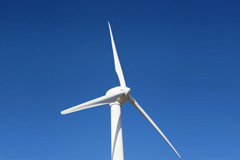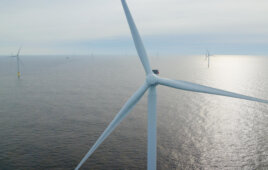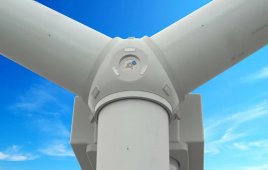Although the U.S. wind energy industry seems forever changing, one of its constant goals is to lower costs by mounting turbines in windier areas, which means offshore and higher up. To take advantage of the stronger and steadier winds in both places, tower manufacturers are looking for ways to reduce the higher costs associated with manufacturing and installing in this challenging setting. Compared to onshore versions, for instance, offshore wind towers are typically larger and must resist fatigue loads associated with higher wind speeds and larger generators, as well as corrosion and colder temperatures.
Machines that manufacture advanced wind turbines and towers depend a lot on conventional yet also advanced manufacturing methods, such as welding. One welding-machine manufacturer recently called on a linear motion and assembly-technology company to help improve custom welding machines for the wind industry. Such welding equipment is used to build turbine towers up to 100-m high.
Typically, a machine rolls a metal plate, often 709 grade 50 carbon steel. into a cylinder called a “can” that measures about 9-ft long by 8 to 15-ft dia. Another machine then welds along longitudinal seams to complete the can and then circumferentially to join them with multi-pass butt welds made by submerged arc welding.
The weld head is suspended from a cantilevered guide rail for outside welding. Most of the machine is stationary while the weld head moves short distances on two and three axes, both along and across a seam. A linear control actuator at the end of a horizontal arm determines the motion of the weld head. Smaller can sections are welded on a large assembly line, called a growing line.
Welding procedures and consumables can vary based on tower requirements for height, design, and location.
After assembling the sections and adding internal tower equipment, such as ladders, they are transported to the installation site, lifted into place, and bolted together.
Welding requirements for offshore tower construction are impacted by the tower’s large size and associated nacelles, as well as the thicker steel required for strength and fatigue resistance. Joining thicker steel sections with larger weld joints requires using a greater volume of welding consumables, thus requiring additional welding passes. This adds time and cost to the job.
Fabricating towers capable of resisting extreme environmental conditions requires thicker plate, or higher-strength steel, or both along with higherstrength weld deposits. Welding such material requires welding procedures and filler metal with a chemical composition that delivers the same mechanical properties in the weld deposit.
Using consumables intended for offshore towers minimizes the associated welding problems, such as cracking. Submerged arc-welding flux and electrodes have been developed to provide the strength and impact properties required for onshore and offshore towers, including the more rigorous requirements of coldclimate towers.
A recent welder is said to give operators the flexibility to control every aspect of the welding output to provide the best results for an application. Enhanced control over the welding waveform let operators weld at significantly higher deposition rates than comparable conventional power sources, thereby improving weld productivity and reducing costs. In addition, multiple power sources can be used to weld with multiple arcs to increase deposition rates and reduce the number of passes required to fill the joint. This decreases production time and consumables, contributing to lower overall wind project costs.
Filed Under: Components, Offshore wind, Projects






What welding standard is used for monopile fabrication? AWS D1.1?